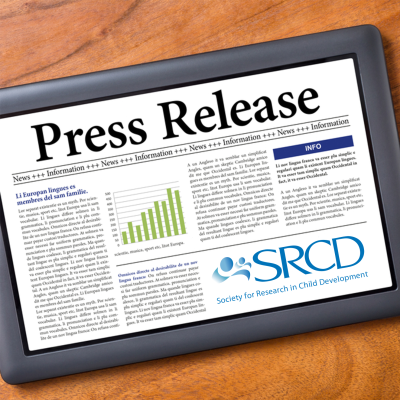Preschool Programs Found to Benefit Low-Income Latino Children
PRESS RELEASE / CHILD DEVELOPMENT: Embargoed for Release on December 6, 2016
Enrollment of Latino children in early care and education programs is relatively low, with six in 10 not attending preschool before kindergarten. In addition, few long-term evaluations of early care and education programs have included Latino children. Now a new study has found that low-income Latino children who attended either public school prekindergarten or center-based care with child care subsidies at age 4 did well through the end of third grade, but those in public school prekindergarten did better academically than those in center-based care, especially English language learners.
The study was conducted by researchers at the University of Texas at Austin, Abt Associates, the University of Missouri, Florida International University, and George Mason University. It appears in the journal Child Development. Using a longitudinal research design that followed children attending different early childhood programs (specifically subsidized center based child care and public school pre-kindergarten), the study shows that public school prekindergarten appears to improve academic outcomes for third grade Latino children.
Researchers used data from 11,902 low-income Latino children who were part of the Miami School Readiness Project (MSRP) between 2002 and 2006. About 75 percent of the children received free or reduced-price lunches (an indicator of poverty) and 80 percent were English language learners.
Children attended either public school prekindergarten programs or center-based programs that accepted child care subsidies. In Miami at the time, prekindergarten programs were housed in public schools, ran for 3 to 4 hours a day, and had an average student-teacher ratio of 20:2. By contrast, the average center-based child care program was either for profit or faith based, ran for 7 to 8 hours a day, and was largely unaccredited, with an average student-teacher ratio of 16:1.
The study looked at children’s performance on state standardized tests of math and reading in third grade as well as children’s grade point average (GPA) in third grade. Researchers tested children’s school readiness at the end of preschool and the beginning of kindergarten. They also assessed the children’s English proficiency each year in school.
“Although all Latino children in our sample performed reasonably well through the end of third grade as compared to other public school children in the region, those who attended public school prekindergarten at age 4 outperformed their classmates previously in center-based care on math and reading, and they had higher GPAs in third grade,” notes Arya Ansari, a postdoctoral research associate at the University of Virginia (who was at the University of Texas at Austin at the time of the study). The findings held even when taking into account baseline characteristics (e.g., receipt of free and reduced-price lunch, gender, age, language at home, and country of origin) and children’s skills when they entered preschool (e.g., cognitive, language, and fine-motor skills, as well as socialbehavioral skills).
“We found that those children who took part in public school prekindergarten programs started kindergarten with stronger academic skills, more optimal social-behavior skills, and English-language proficiency,” Ansari says. “This appeared to contribute to their success in third grade.” The findings were also true for English language learners.
Because the study looked at the experiences of Latino children in Miami, the findings are not generalizable to all Latinos (who may have different immigration backgrounds) in other parts of the United States. In addition, the study’s authors caution, the research can’t speak to whether these children’s experiences are typical or unique compared to children from other backgrounds (for example, Latino children who attended Head Start or who were cared for at home were not included in the MSRP sample).
Adds Adam Winsler, professor of psychology at George Mason University, who was a principal investigator for the original Miami School Readiness Project (MSRP) and coauthor of the study: “While our results are not causal, they provide much-needed insight into the experiences of Latino children in publicly funded early care and education programs in Miami. Our work reveals that policymakers should consider that such programs can help put Latino children on a path toward more positive school achievement.”
The research was funded by the Early Learning Coalition of Miami-Dade/Monroe, the Children’s Trust, the Eunice Kennedy Shriver National Institute of Child Health and Human Development, and the National Research Center on Hispanic Children and Families, which is funded by the Office of Planning, Research, and Evaluation within the Administration for Children and Families in the U.S. Department of Health and Human Services.
###
Summarized from Child Development, Differential Third-Grade Outcomes Associated with Attending Publicly Funded Preschool Programs for Low-Income Latino Children by Ansari, A (University of Virginia, formerly at University of Texas at Austin), Lόpez, M (Abt Associates), Manfra, L (University of Missouri), Bleiker, C, Dinehart, LHB (Florida International University), Hartman, SC (West Virginia University), and Winsler, A (George Mason University). Copyright 2016 The Society for Research in Child Development, Inc. All rights reserved.


